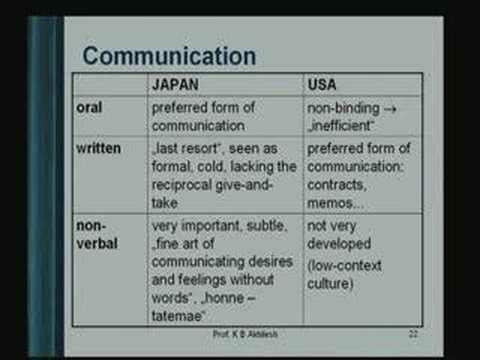Introduction
Globalization is redefining the marketplace environment as companies try to explore new markets beyond their national borders. The improved technology in the field of transport and communication has made it possible for firms to move their goods with ease and engage with local and international business partners in a way that has never been witnessed in the past. The desire to go global has been witnessed in almost every industry, including the real estate sector. Many American companies are currently operating in Asia-Pacific, Europe, South America, the Middle East, and Africa (Lokkesmoe, Kuchinke, & Ardichvili, 2016). They understand the concept of competition and the need to explore new markets as the best way of dealing with stiff rivalry within a local market. However, operating in the global market brings new challenges that the company must overcome.
Cultural differences in the global society are a major concern. Socio-political and economic practices common in the United States may be considered strange in Japan. Understanding the business environment of the host country is critical for the success of a foreign firm. When defining operational needs within an international market, one of the first steps that the management of a given firm must take is to determine the suitability of the business climate of a given country based on the cultural forces. A firm can make a decision to avoid a specific market if it is established that the environment is unfavorable based on the local culture. In this paper, the focus is to discuss the global cultural climate that may affect operational needs of an American company that seeks to enter the Japanese market.
The Concepts of Culture, Business Environment, and Operational Needs
When a firm considers operating in the global market, Mueller, Silva, Almeida, and Loureiro (2017) argue that the management should start by understanding the local culture, business environment, and operational needs. Culture refers to “the ideas, customs, and social behavior of a particular people or society” (Zajda, 2015, p. 78). These ideas and customs are often based on the history of a given people, their immediate environment, and the contact with other communities, and the religion they have embraced. According to Busse, Schleper, Niu, and Wagner (2016), the culture of a people is critical in defining the environment within which a firm operates. A good example is the cultural practice in the Kingdom of Saudi Arabia that prohibits its people from eating pork.
The culture is so strict that the society is not only comfortable with eating pork but also intolerant towards firms selling this product. They view such companies as ridiculing their cultural practices and it is common to find such businesses facing the wrath of members of the public. It means that engaging in such a business in a predominantly Islamic country such as Saudi Arabia may not just be an unprofitable business venture but also a dangerous one for the owner and its employees. It may also be difficult to find workers who may be willing to work in such a business because the majority of people in the country believe that handling such products goes against their religious teaching. As such, culture is one of the most important factors that define the business environment, as Denson (2014) notes.
Business Environment
The business environment defines practices that a firm must embrace to achieve success in a given market. Graham (2014) defines a business environment as “the sum total of all external and internal factors that influence a business” (p. 54). As shown in this definition, the forces that define business environment can be classified broadly as internal and external factors. Internally, issues such as the financial capacity of a firm, skills and experience of its employees, and innovativeness of the workforce are crucial in defining the environment. The leadership principles and strategies that a firm embraces and the organizational culture also define its internal environment. On the other hand, the external environment are all forces outside of a firm’s control that have direct or indirect impact on its operations. PESTEL analysis can help to understand the external environment in Japan that ABC Company would have to manage.
The political environment in Japan has evolved over the past decades from dictatorship to constitutional monarch (Ahmed & Alam, 2017). In this context, the Emperor of Japan is a ceremonial head of state, with the real power being with the prime minister. After the Second World War, Japan has experience a long period of political stability, which is beneficial to the business community. The political class strongly supports the business community and foreign firms capable of aligning their operations with the local culture have not faced any unfair treatment from the government. Morrison (2016) explains that the political class has been keen on diversifying the country’s economy and empowering its citizens. Corruption is not tolerated in the country at both government and private entity level. The government has enacted policies meant to protect the business community from any political interference.
The economic environment is another major factor that the management of a company must consider before making a decision to explore a new market. The purchasing power of the citizens and their population are some of the most important factors that have to be considered. Japan is currently the third largest economy in the world after the United States and China, and it also has the tenth largest population of about 126,440,000 (Gaspar, 2016). Table 1 below shows the ranking. According to Tuleja (2017), besides the United States, Europe, and China, Japan is the most preferred market for international corporations. The purchasing power of customers in this market is relatively high. Japan also has one of the lowest unemployment and underemployment rates in the world. Its real estate sector is well developed, especially in major cities such as Tokyo and Osaka. Although there is a major concern about the growing population of senior citizens who cannot be actively engaged in economic activities, the pension plans and movement of job seekers from neighboring countries such as North Korea, South Korea, and China would likely help in addressing this problem.
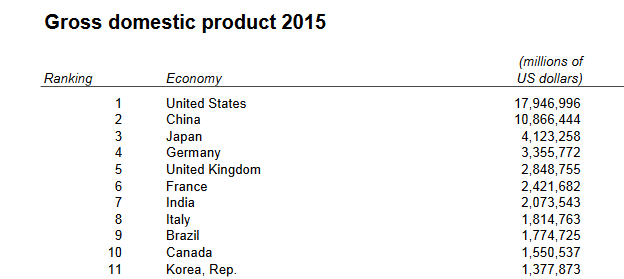
The social environment is another external environmental factor that has a direct impact on the operations of a firm. Issues such as cultural practices, religious beliefs, and family relations significantly affect the business environment. According to a survey that was conducted by Graham (2014), about 52% of the Japanese do not identify with any religious groupings. Those who identify with Buddhism are 34% while Shinto accounts for another 11%. Christians form 10% of the country’s total population. Zajda (2015) explains that the religious groups in China have co-existed harmoniously for decades. They view the diversity as a sense of religious freedom. An American firm seeking to explore the Japanese market will not face major challenges with regard to the social environment of the country. However, such a firm should be ready to deal with strong family ties.
The Management of ABC Company should understand that Japanese value close family relations. It means that transferring an employee to a town where they will be away from their family members may be a concern to most of the Japanese. A report by Graham (2014) also shows that Japanese are some of the most hardworking people in the world. They can comfortably work for over 14 hours a day without complaining. Figure 1 below classifies different countries in terms of annual hours worked versus their contextual background. It is evident that Japan is at the top of the list in terms of the hours employees spend at the workplace while the United States is at the lower end. An American company coming to Japan will benefit from the work culture and ethics in this country.
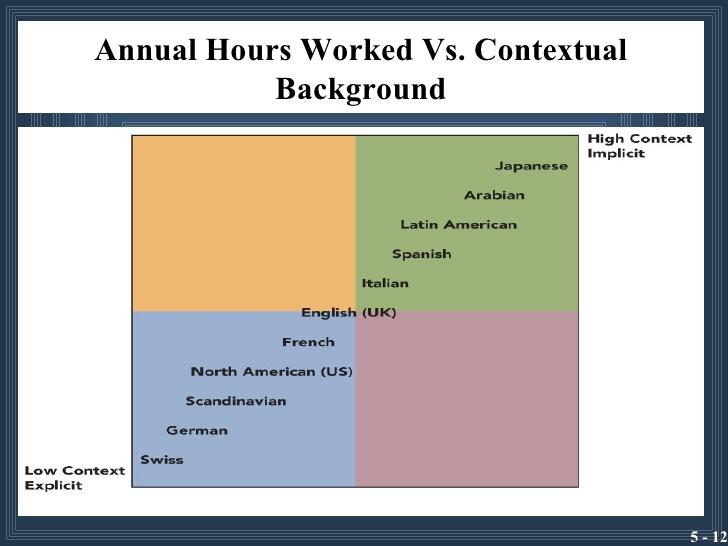
Technological factors also have a significant impact on the operations of a firm in the market. Eastman Kodak was once the world’s largest company in the film industry, controlling over 85% of the global market. However, its reluctance to embrace the digital film concept enabled its rivals such as Japan’s Fujifilm overtake it to become the dominant firm in this industry globally. Japan is keen on embracing emerging technologies as a way of improving competitiveness in the global market. ABC Company should be ready to deal with an environment where new technological concepts are embraced rapidly to enable firms to enjoy its benefits before other firms around the world can emulate the new concept. In such an environment, it is necessary to employ a team of highly skilled and experienced workers who are capable and ready to embrace change.
Ecological factors should not be ignored, especially at a time when climate change is becoming a major problem. Japan has been one of the countries championing for reduction of carbon emissions as a way of dealing with climate change and global warming. The country has hosted major international environmental conservation conferences, including the Kyoto Protocol where various measures were recommended to help deal with environmental pollution (Morrison, 2016). A foreign firm planning to enter the Japanese market should be ready to embrace new technology-based operational procedures that limit emission of dangerous gases into the environment. The concept of carbon credit is also gaining popularity. It means that a real estate company whose operations help in absorbing carbon instead of emitting greenhouse gases can get financial rewards. The government has set emission of these gases at a given level, beyond which a company would be expected to pay a certain amount depending on the amount emitted beyond the set limit.
A company cannot operate successfully in a lawless country. The legal environment defines how a firm should relate with its customers, suppliers, the government, competitors, and the public. It outlines the responsibilities that must be respected and benefits that an entity is entitled to because of the business arrangement. Japan has a strong legal environment that protects all parties from unfair business practices, irresponsibility, arson, manipulation, theft, robbery, burglary, and any other criminal or unethical business acts. The legal environment is supportive of both local and foreign companies operating in the local market. ABC Company is assured that local institutions or criminal minded individuals will not target its operations.
Operational Needs
According to Ahmed and Alam (2017), operational needs, refers to “gaps in existing capabilities that are significant impediments to achieving the mission area objectives” (p. 32). When a firm decides to expand its operations to a foreign market, one of the main concerns would be the gap between what is expected of employees and their actual capacity. A good example is the growing popularity of eco-house, an environmentally friendly structure designed to emit low carbon because of its design and materials used. Operational needs would emerge in a situation where the local employees lack knowledge and experience on how to design such houses.
A densely populated city like Tokyo can benefit greatly from such houses. However, local employees should have the capacity to design and construct such houses. In many cases, it may force the management to take its workers through some form of training to enable them address the gap. (Zajda, 2015) argue that sometimes it may be appropriate to hire a higher number of parent country or third country nationals than would be usual to help local employees to understand the new concept. The goal should be to ensure that the current workforce has the capacity to operate effectively and achieve specific objectives. It is also crucial for the management to equip these employees. Embracing emerging technologies can help improve creativity among employees and eliminate the gap.
Managing Cultural Differences in the International Market
The global market presents numerous opportunities for growth and development. However, Denson (2014) warns that a firm should be ready to deal with challenges associated with cultural differences in the international business environment. One must understand that policies and business practices popular in the United States may not work effectively in Japan, China, or South Africa. Developing effective strategies that can enable a firm to address such concerns starts by identifying the nature of the foreign market. In this case, Hofstede’s cultural dimension model can help in comparing cultural practices in the United States and that of Japan to help define how a form can deal with the issue.
Hofstede’s Cultural Dimensions Theory
When an American firm is planning to make an entry into the Japanese market, it is crucial for the management to conduct a comparison of the two business environments to have a clear picture of what to expect in the new market. Hofstede’s cultural dimension model offers a prefer opportunity to compare the cultural environment in the two countries, making it possible to develop a clear plan for operation in the new market. Morrison (2016) says, “The framework is used to distinguish between different national cultures, the dimensions of culture, and their impact on a business setting” (p. 73). It identifies six factors that can be used to define culture, as shown in figure 2 below.
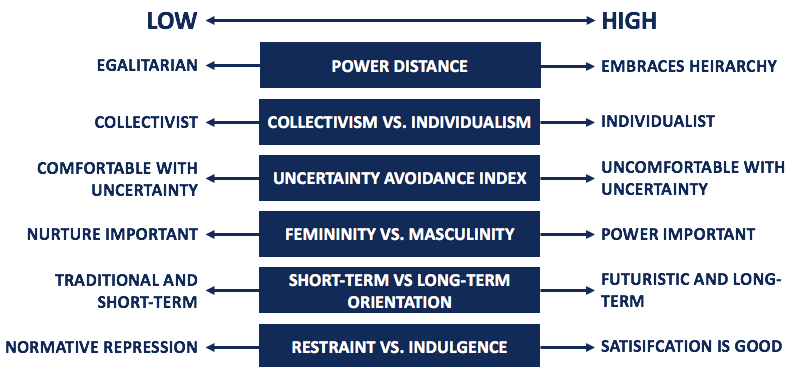
Power distance index defies the extent to which a given society can tolerate inequality and power (Lokkesmoe et al., 2016). When the power distance is high, it is an indication that the society accepts and encourages power differences, bureaucracy, and respect for the authority. When comparing the United States and Japan, it is evident that the United States has a low power distance. People find it important to question and criticize leadership as a way of increasing their commitment and responsibility to the people. In an organizational context, top managers are held accountable for their actions and are not expected to ignore their junior officers. The approach of leadership in Japan is significantly different from that of the United States.
In this country, there is a strict hierarchy of leadership that everyone is expected to follow. Junior officers are not expected to question their superiors as that would be considered insubordination, which could lead to serious consequences. As Gaspar (2016) observes, the Japanese society is comfortable with this strict leadership approach both in the political arena and in the business environment. It is also evident that while Japanese prefer informal (oral and non-verbal) communication, Americans prefer official (written) communication in the business arena, as shown in appendix 2. When ABC Company is planning an entry into this market, it should be ready to work under such an environment.
The next factor in the model is the individualism versus collectivism dimension. It focuses on the extent to which a community is integrated and the perceived dependence of people on a given group. Individualism is a case where people focus more on themselves other than relying on groups. This cultural practice is common in the United States. Other than their immediate family, Americans rarely focus on their larger families or clan. Everyone strives to achieve personal success. The same practice is reflected in the workplace environment. The focus of an employee is to register impressive performance with the aim of achieving career growth and better pay.
Tuleja (2017) observes that employees are currently paying their employees based on their perceived importance to the firm other than their seniority or the time spent at the company. It explains why employees’ unions are becoming increasingly irrelevant in this country. On the other hand, Japan highly values collectivism. People view themselves as members of a larger family. Morrison (2016) argues that there is always a genuine effort to improve the environment in a way that would benefit everyone. In the workplace environment, employees tend to work as a unit, with the knowledge that success can only be realized if everyone is brought on board. This significant difference in the business environment may have a significant impact on the firm.
The uncertainty avoidance index defines the extent to which a given society can tolerate ambiguity or unknown situations (Mueller et al., 2017). When the uncertainty avoidance index is high, it is an indication that the society does not tolerate ambiguity, uncertainty, or taking of risks. Such societies tend to avoid venturing into major projects without having a clear knowledge of its outcome. Japan is a high uncertainty avoidance country, especially in the business arena (Gaspar, 2016). Business executives are always cautious when venturing into new business as a way of avoiding losses due to unforeseen forces. Low uncertainty avoidance index is an indication that a given society can withstand uncertainties and risks that may arise from unknown forces (Ahmed & Alam, 2017). They tend to be adventurers but ready to deal with negative forces that may emerge when trying new concepts. The American society is one such community where people do not fear trying new concepts. Many executives encourage creativity as a way of improving performance. They know that such efforts may have various challenges, but feel it is the best way of moving from the current practices to better ways of delivering value to customers.
Masculinity versus femininity, sometimes known as tough versus tender, is an index that focuses on sexuality equality within a given society. A masculine society views the concept of gender equality as irrelevant in important public discourses. Women are viewed as less deserving people in the economic and business arena. Japan is a more masculine society than the United States. Although the United States is also considered a masculine state because the political and business environments are more favorable to men than women are, the country has made steps to empower women. According to Tuleja (2017), American female students are currently performing just as good as their male counterparts and are pursuing careers in engineering, medicine, and law, which were previously considered male domain. The Japanese government has also made efforts to ensure that women are empowered both politically and economically. However, men still wield power in the domestic and business arena. This issue may not be a major concern for an American firm seeking to operate in the Japanese market.
The long-term versus short-term orientations focuses on how a community views the time horizon (Busse et al., 2016). Long-term orientation is futuristic in nature, focusing more on long-term success instead of short-term gains. In such a society, people tend to delay short-term gains, success, or benefits for a long-term goal. The Japanese society is more futuristic than that of the United States. The desire to have a secured future makes the society to focus more on long-term development other than immediate gratifications. On the other hand, the American society leans more towards short-term orientation than long-term goals. According to Gaspar (2016), the United States has enjoyed a long period of economic progress. Unemployment and underemployment in the country is one of the lowest in the work. As such, people are assured of their future. This culture is epitomized in the spending culture of most Americans. Unlike in Japan and China where people prefer savings as a way of securing their future, Americans would spend most of their income because they know their job is protected and upon retirement, their pension plans would help them meet their financial needs. For ABC Company, moving from the United States to Japan would mean having to deal with customers who prioritize specific purchases over other.
The last dimension in this model is the indulgence versus restraint, which focuses on the tendency of members of a society to fulfill their desires (Denson, 2014). It focuses on how members of a given community can control their desires and impulses. Indulgence is an indication that members of a society tend to allow themselves to have self-gratification and some fun as long as their indulgence do not affect others negatively. American society is an indulgency community where the primary concern is to respect other people’s right and freedom to enjoy life. People can embrace the religion they want, express their sexual orientation despite the possibility that others may consider it abnormal, and engage in activities that would not be permissible in other countries.
Tuleja (2017) explains that the culture of indulgence tend to be more prevalent in a society where people feel their future is secured. This is so because sometimes in the process of having fun, one has to spend a substantial amount of income. The Japanese society tends to be more restraint than that of the United States, not necessarily because of economic reasons, but due to the strict principles that it has been embracing for decades. The respect for the authority and the desire to act within the law makes the majority cautious whenever they want to take a given action (Ahmed & Alam, 2017). The desire to avoid punishment has promoted the culture of restraint in this society. The comparison of the United States and Japanese culture using this model is summarized in appendix 1.
Managing Cultural Differences through the Performance-Culture Matrix
The management can decide to deal with the cultural problem by ensuring that its employees are adequately equipped with skills that can help them perform in the new market. The matrix identifies quadrants that a firm can classify its employees. In the first quadrant are high performing employees who are struggling to understand the local culture. The best decision of the management is to tolerate these employees despite this weakness as long as they continue to register impressive performance. Effort can be made to help them understand the local culture. The second quadrant has high performing employees who also understand the local culture. The goal in this case should be to encourage and reward them accordingly to ensure that they remain within the firm.
In the third quadrant are the low performers who also lack an understanding of the local culture. The best decision is to eliminate such employees because they are of limited value to the company. The fourth quadrant has the low performers who have a high understanding of the local culture. In case the workforce is blotted, they can also be eliminated from the company. However, sometimes it may be necessary to given them a room for improvement primarily because they understand the local culture. They can be trained to help improve their performance. Figure 3 below summarizes the classification and actions that should be taken in each case.
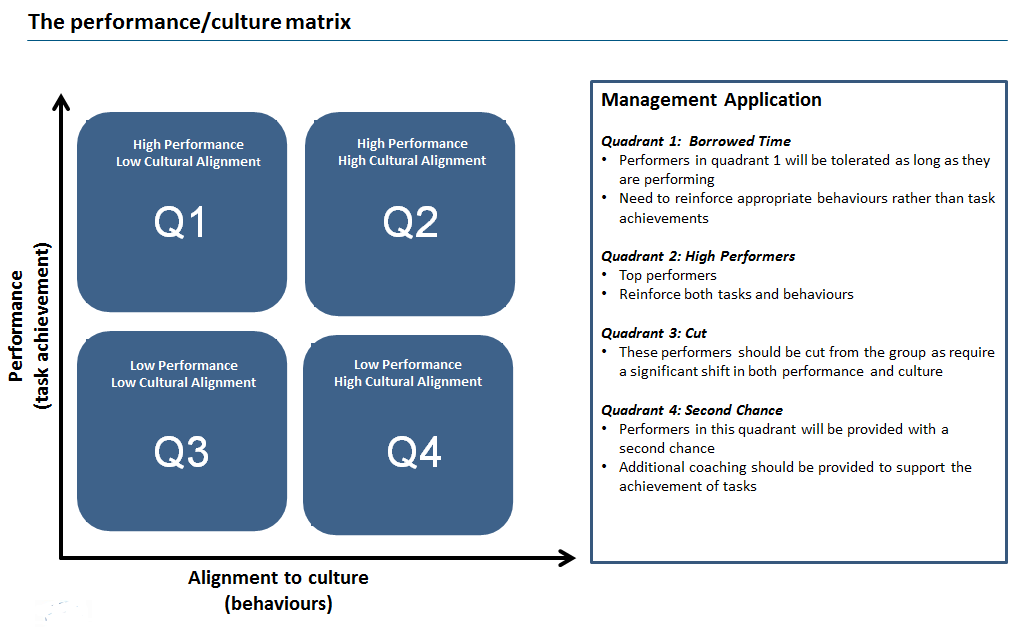
Conclusion
Japan is one of the most attractive markets in the world because of its large population and strong economy. When a firm such as ABC Company, is planning to explore the international markets, Japan would be one of the best options. However, the study shows that global cultural differences may be a major issue for such a company. The analysis of the two countries shows that cultural practices in Japan is significantly different from that of the United States. Although the country is politically stable and with a legal environment, that supports both foreign and local firms, understanding the local culture is critical in enabling a firm to realize success in the market. The study recommends thorough research as a way of understanding the local culture and regular training as a means of equipping employees with relevant skills that can enable them to work effectively in this new environment. The management should be keen on identifying and addressing operational needs to enhance the overall performance of the company.
References
Ahmed, F., & Alam, M. A. (2017). Business environment: Indian and global perspective. Delhi: PHI Learning Private Limited.
Busse, C., Schleper, M.C., Niu, M., & Wagner, S.M. (2016). Supplier development for sustainability: contextual barriers in global supply chains. International Journal of Physical Distribution & Logistics Management, 46(5), 442-468.
Denson, A. (2014). Cool Japan guide: Fun in the land of manga, lucky cats and ramen: A comic book writer’s personal tour of Japan. Tokyo, Japan: Tuttle Publishing.
Gaspar, J. E. (2016). Introduction to global business: Understanding the international environment & global business functions (2nd ed.). New York, NY: Cengage Learning.
Graham, P. J. (2014). Japanese design: Art, aesthetics & culture. Tokyo, Japan: Tuttle Publishing.
Lokkesmoe, K.J., Kuchinke, P.K., & Ardichvili, A. (2016). Developing cross-cultural awareness through foreign immersion programs: Implications of university study abroad research for global competency development. European Journal of Training and Development, 40(3), 155-170.
Morrison, J. (2016). The global business environment: Challenges and responsibilities. Basingstoke, UK: Palgrave Macmillan.
Mueller, W., Silva, T.H., Almeida, J.M., & Loureiro, A.F. (2017). Gender matters! Analyzing global cultural gender preferences for venues using social sensing. EPJ Data Science, 6(5), 1-16.
Tuleja, A.E. (2017). Intercultural communication for global business: How leaders communicate for success. New York, NY: Taylor & Francis.
Zajda, J.I. (Ed.). (2015). Nation-building and history education in a global culture. Dordrecht, Netherlands: Springer.
Appendices
Appendix 1: Cultural Differences between the United States and Japan
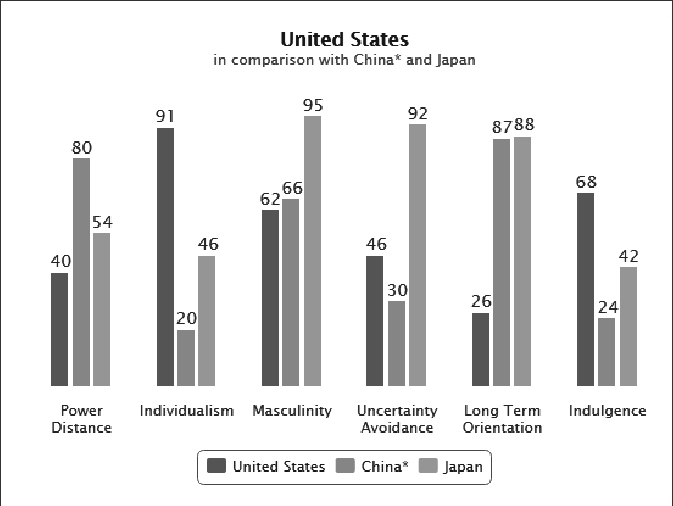
Appendix 2: American vs. Japanese Preferred Communication Styles
